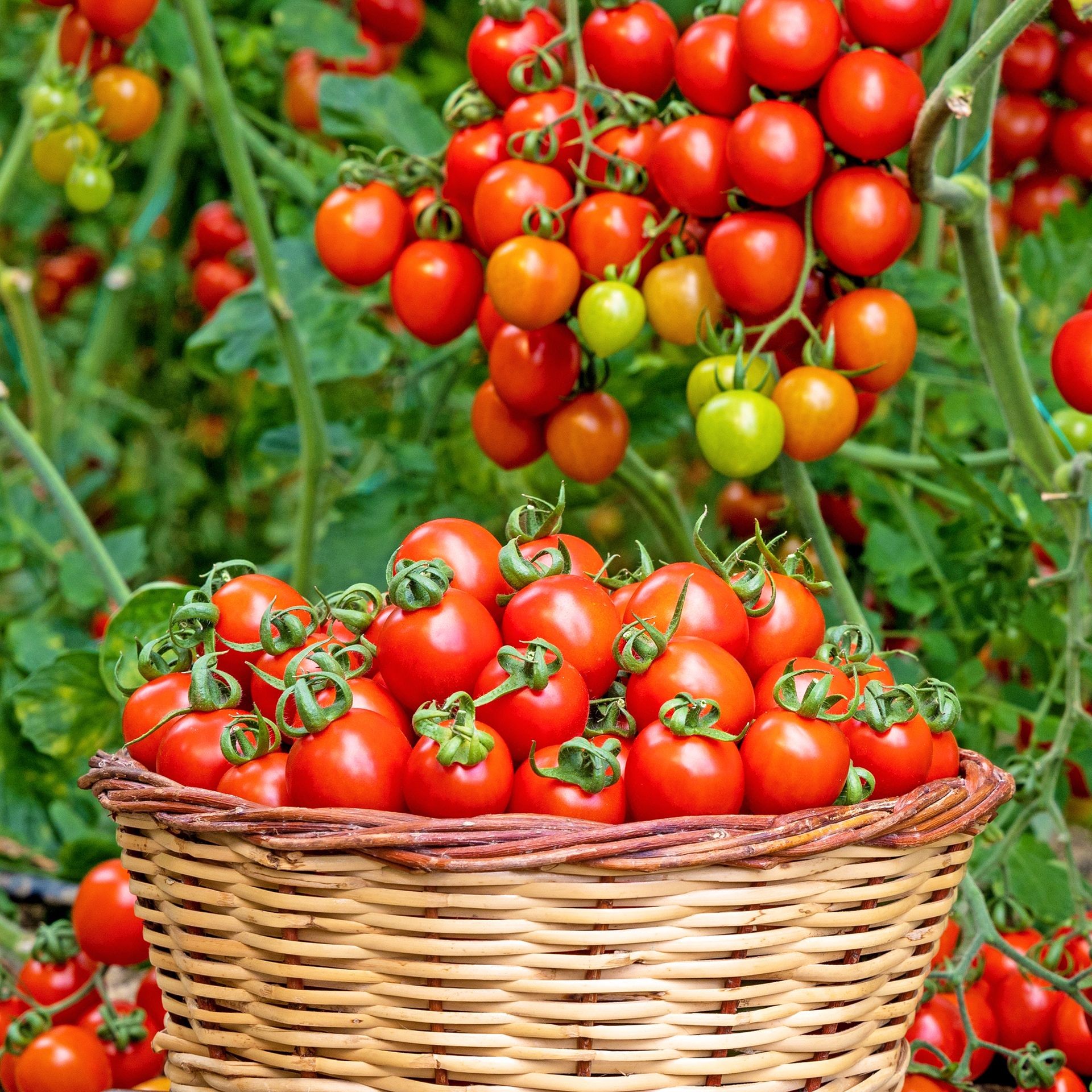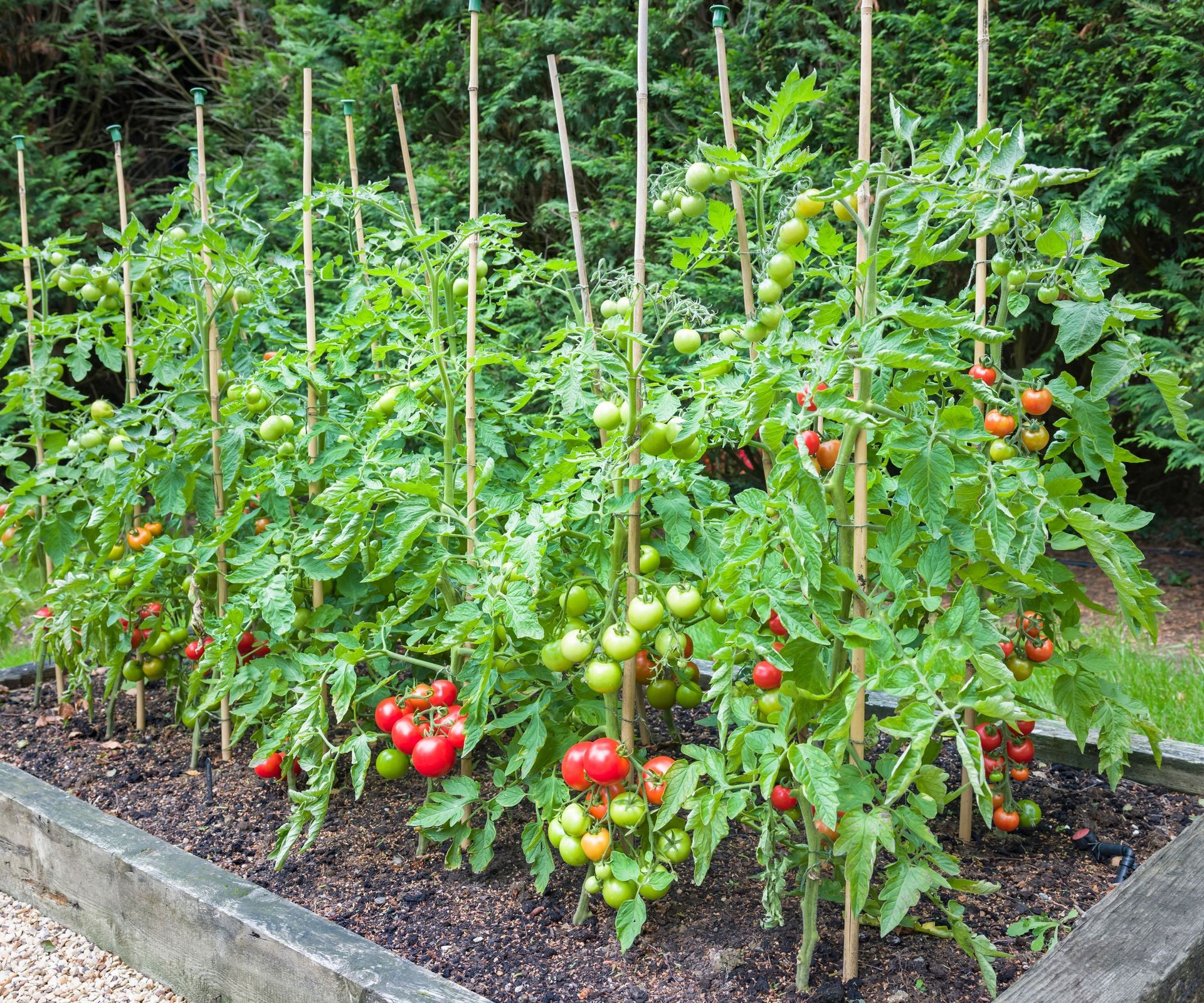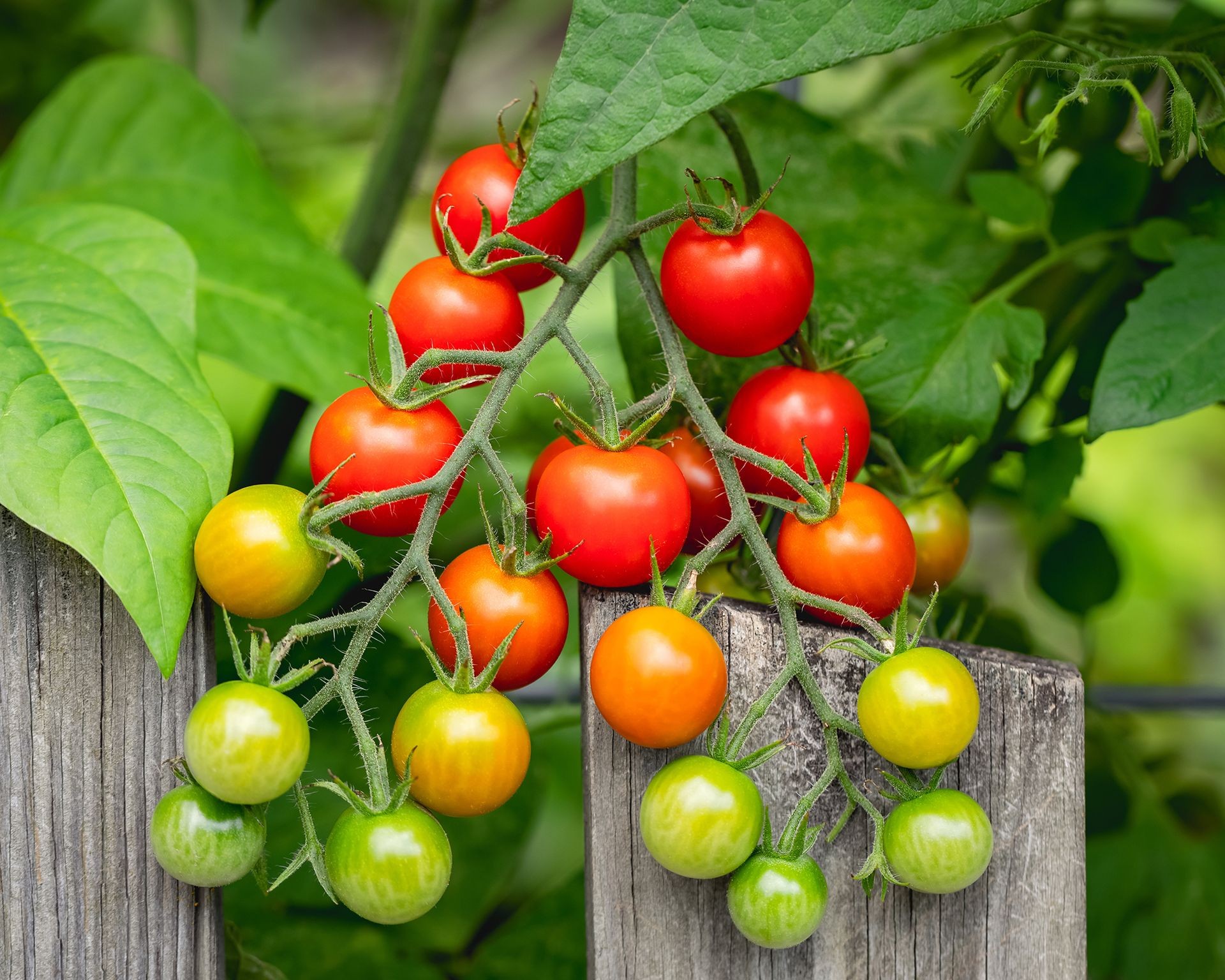No products in the cart.
NEWS
Growing Indeterminate Tomatoes: The Key to Continuous Harvests
Imagine stepping into your garden each day and plucking fresh, sun-warmed tomatoes for salads, sandwiches, and snacks, not just for a week or two, but from midsummer right up to the first frost. This dream is entirely possible with indeterminate tomato varieties, the true vining powerhouses of the tomato world. As a long-time grower and passionate gardener with Biogarden.asia, I’ve found these plants incredibly rewarding, offering not only abundant yields but also a fascinating glimpse into the plant’s persistent drive to produce fruit.
Tomatoes generally fall into one of two main categories: determinate or indeterminate. This classification describes their growth habit and, importantly, their fruiting pattern. While determinate types, often called “bush” tomatoes, grow to a set size and produce most of their fruit in a concentrated burst, indeterminate tomatoes are the marathon runners. They continue to grow, vine, and produce new flowers and fruit throughout the entire growing season. If you’re looking for a steady supply rather than one large harvest, indeterminate varieties are your best bet. They represent a vast array of choices, including many beloved heirloom types, offering incredible diversity in shape, color, flavor, and size.
Understanding the Vining Nature of Indeterminate Tomatoes
The defining characteristic of indeterminate tomato plants is their vigorous, vining growth. Unlike their determinate cousins that have a genetically programmed limit to their size, indeterminate stems can easily stretch from 6 to over 20 feet (approximately 2 to 6 meters) in length under ideal conditions. This perpetual growth means they require significant support to keep their stems and developing fruit off the soil, preventing rot and improving air circulation. Structures like sturdy stakes, cages, or trellises are essential companions for these climbing plants from the moment they are planted.
This continuous growth habit is also why indeterminate varieties offer a prolonged harvest. Instead of setting all their fruit at once and then finishing, they constantly initiate new flowering nodes and set fruit on new growth. This means you can begin harvesting ripe tomatoes usually a bit later than determinate types, but you’ll continue to pick them regularly, often several times a week, from the peak of summer until temperatures drop significantly in autumn. Many gardeners also find that this longer growing period contributes to the development of larger and often more intensely flavored fruits.
Providing Essential Support for Vining Growth
Due to their impressive height potential and the weight of continuously developing fruit, providing robust support is non-negotiable for indeterminate tomatoes. Installing the support structure, whether it’s stakes, cages, or a trellis system, at the time of planting is the most effective approach. This prevents disturbing the plant’s roots later on.
Trellising is a popular method, allowing you to train the main stem(s) upwards and tie them off as they grow. This maximizes vertical space and keeps foliage and fruit well-ventilated and exposed to light. Individual stakes or tomato cages are also effective but require more diligent work as the plant grows, often necessitating regular tying to the support structure to prevent stems from flopping over or breaking under the weight of the fruit. Choosing the right support method depends on the specific variety, the space you have, and your personal preference for managing the plants.
Mastering the Art of Pruning Indeterminate Tomatoes
Pruning plays a crucial role in managing indeterminate tomato plants and optimizing their yield and health. The primary goal of pruning is often to remove “suckers,” which are small shoots that emerge from the leaf axils (the point where a leaf stem meets the main stem). If left to grow, these suckers will develop into full-sized stems that flower and fruit, but they also consume energy, increase plant density, and require more support.
Most gardeners choose to train indeterminate varieties to a single main stem by regularly pinching off suckers when they are small. This directs the plant’s energy into developing fruit on the main stem and allows for better airflow and light penetration, reducing the risk of fungal diseases. However, some experienced growers successfully manage plants with two or even three main stems (multi-stem pruning). This can potentially increase the total yield on some varieties but demands even sturdier support and more careful management. Experimenting to see what works best for your specific variety and growing conditions is key.
Selecting the Best Indeterminate Tomato Varieties
Choosing which indeterminate varieties to grow is an exciting part of the process, with an incredible range available. Your ideal choice will depend on several factors:
- Intended Use: Are you looking for slicing tomatoes for sandwiches, small cherry tomatoes for snacking, or meaty paste tomatoes for sauces and canning?
- Climate: Some varieties are better suited to shorter seasons or specific temperature ranges.
- Disease Resistance: In regions prone to certain tomato diseases, selecting resistant cultivars can save you a lot of heartache.
- Space: While indeterminate tomatoes vine, some varieties are slightly more manageable than others, and spacing is always critical.
Here are some examples of popular indeterminate varieties often favored by growers:
Popular Indeterminate Slicing & Salad Varieties
These reliable performers yield large, flavorful fruits perfect for fresh eating.
- Brandywine: A classic heirloom known for its rich flavor and large, often irregularly shaped pink or red fruits. Excellent for slicing.
- Big Beef: Lives up to its name, producing very large, bright red, round fruits. A vigorous and highly productive plant popular for its consistent yield and flavor.
- Better Boy: A widely grown hybrid known for its exceptional yield of large, flavorful fruits that strike a good balance between sweetness and acidity.
- Goose Creek: Offers beautiful pink-blushed fruits that are superb for slicing and also lend themselves well to making sauces due to their depth of flavor.
Top Indeterminate Cherry & Snacking Tomatoes
Perfect for adding bursts of sweetness to salads or enjoying straight off the vine.
- Supersweet 100: Produces long clusters of incredibly sweet, bite-sized red cherry tomatoes throughout the season. Very prolific.
- Yellow Pear: Offers charming, pear-shaped yellow fruits with a mild, sweet flavor. Adds visual appeal to dishes and is easy to snack on.
- Sun Gold: Known for its intensely sweet, slightly tangy, and complex flavor. These small, rounded orange-yellow tomatoes are highly addictive.
- Black Cherry: A unique variety with small, dark mahogany-purple fruits. Plants tend to be quite disease-resistant and offer a rich, smoky-sweet flavor.
Recommended Indeterminate Varieties for Sauces & Paste
These varieties typically have dense flesh and fewer seeds, making them ideal for cooking down into sauces and pastes.
- San Marzano: Considered by many to be the gold standard for paste tomatoes, especially in Italian cooking. Offers elongated, flavorful fruits with dry, meaty flesh.
- Roma: A common paste tomato. It’s important to note that both determinate and indeterminate versions exist, so check the plant tag or seed packet. The indeterminate types will provide a longer harvest window.
- Amish Paste: A larger, heart-shaped paste tomato compared to Roma or San Marzano. Valued for its substantial size, dense texture, and sweet flavor.
- Viva Italia: A productive hybrid yielding thick-walled, pear-shaped fruits. Often noted for its good disease resistance along with high yield.
Indeterminate Tomatoes with Disease Resistance
Selecting varieties bred for resistance to common tomato diseases can be particularly beneficial in humid climates or areas where specific pathogens are prevalent. Many popular varieties, including some mentioned above, offer resistance to conditions like Verticillium wilt, Fusarium wilt, or Nematodes, contributing to healthier plants and more reliable harvests. Looking for these resistances when choosing your seeds or seedlings is a smart practice.
 Basket overflowing with a successful harvest of ripe indeterminate tomatoes, illustrating abundant yield
Basket overflowing with a successful harvest of ripe indeterminate tomatoes, illustrating abundant yield
Essential Care Tips for Vining Tomatoes
Successfully growing indeterminate tomatoes requires consistent care to support their continuous growth and heavy fruit load.
Start with well-draining soil that is moderately fertile. A location receiving at least eight hours of direct sunlight daily is non-negotiable for maximum fruiting. As mentioned, install support at planting time.
Proper spacing is particularly vital for these large plants to ensure adequate air circulation, which helps prevent fungal diseases. Space indeterminate plants 3 to 4 feet (90 to 120 cm) apart. This might seem generous when they are small, but they will quickly fill the space.
Regular pruning, primarily removing suckers, is essential for directing energy towards fruit production, improving air circulation, and keeping the plant manageable. Pinching out suckers when they are small is easiest.
Watering needs vary based on weather, soil type, and whether plants are in containers. The general rule is to water deeply once or twice per week, ensuring the root zone is thoroughly moistened. Avoid frequent shallow watering. Consistent watering is key to preventing issues like blossom end rot.
Feeding is also important throughout the active growing season. Begin feeding every other week once flowers appear. Use a fertilizer formulated for tomatoes, typically one that is slightly lower in nitrogen and higher in phosphorus and potassium to encourage flowering and fruiting rather than excessive leafy growth. Many specialized tomato feeds are available.
Growing indeterminate tomatoes can be a deeply satisfying experience, providing a bounty of fresh fruit over several months. With the right support, thoughtful pruning, and consistent care, these vigorous vines will reward your efforts generously.
 Vining indeterminate tomato plants trained upwards on sturdy wooden stakes in a garden bed, demonstrating essential support
Vining indeterminate tomato plants trained upwards on sturdy wooden stakes in a garden bed, demonstrating essential support
Reaping the Benefits of a Long Tomato Season
Choosing to grow indeterminate tomatoes is choosing a season-long adventure in tomato cultivation. The effort involved in providing support and performing regular pruning is richly repaid by the continuous harvest of fresh, flavorful fruits. Whether you crave juicy slices for sandwiches, sweet bursts for snacks, or a steady supply for homemade sauces, there’s an indeterminate variety perfect for your needs.
Understanding their vining nature and providing the specific care they require will lead to healthier plants and more abundant yields. The satisfaction of picking ripe tomatoes from your garden day after day makes these plants a staple for many home gardeners seeking a continuous supply.
Ready to embark on your indeterminate tomato growing journey? Finding quality seeds and the right growing supplies is the first step. Explore the wide range of seeds, supports, and nutrient products available at Biogarden.asia, curated to help your plants thrive. Share your growing successes and perhaps even inspire others with your bountiful indeterminate tomato harvest this season!
 Close-up of a cluster of bright red indeterminate cherry tomatoes on the vine, ready for snacking
Close-up of a cluster of bright red indeterminate cherry tomatoes on the vine, ready for snacking



